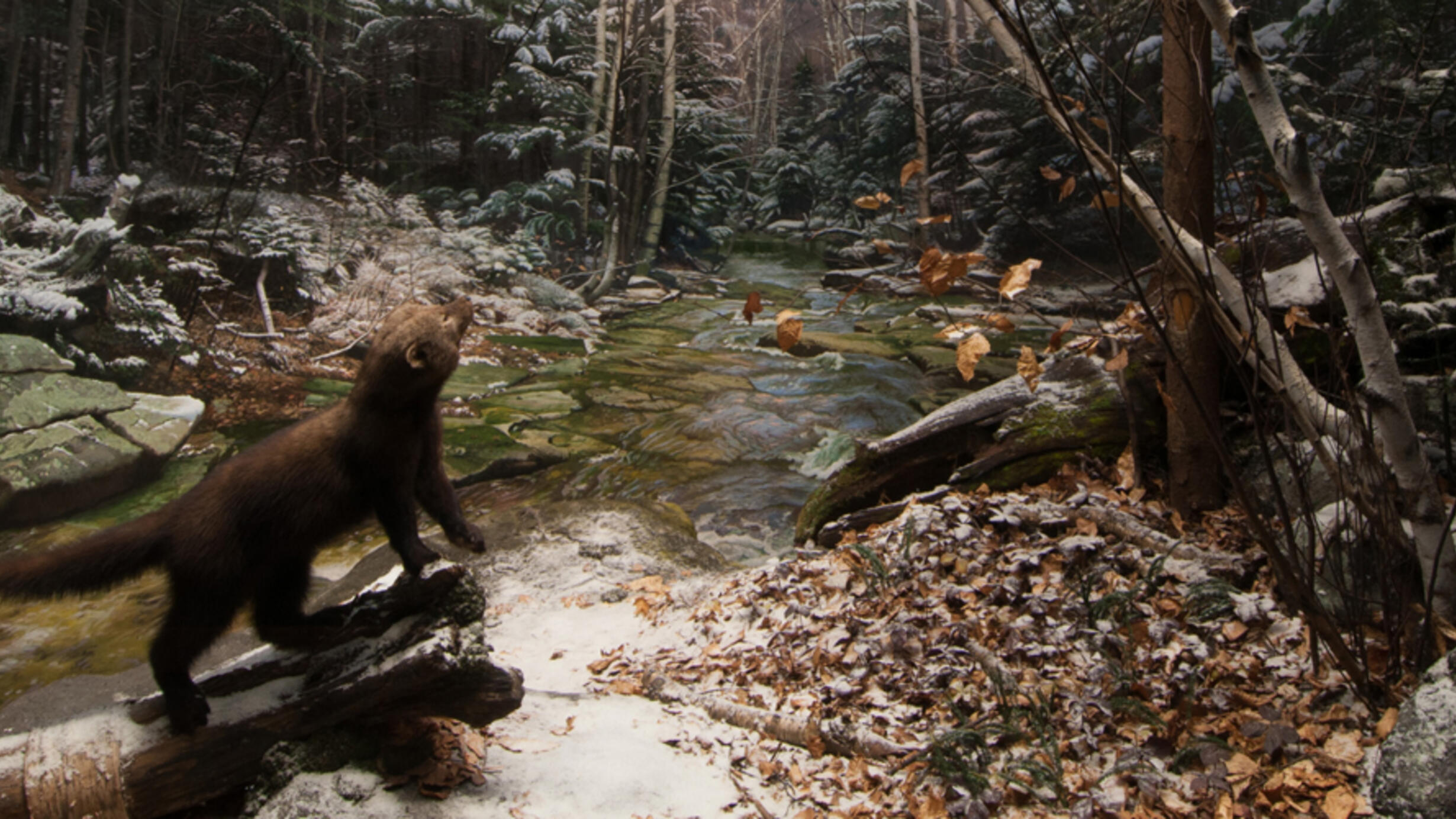Fisher and Porcupine
Part of Hall of North American Mammals.

November at Sunrise
Mount Washington, New Hampshire
As dawn breaks, a fisher has discovered its favorite prey, a porcupine, descending a tree. Fishers have quick reflexes and a low-slung body—all the makings of a porcupine killer. First, a fisher will circle the animal, nimbly dodging lashes of the heavily quilled tail. Then it will dart in to bite the porcupine’s unquilled face, attacking repeatedly until subdued.
Fishers can even climb after a porcupine in a tree and attack from above. This porcupine’s safest bet is to climb higher and keep its tail down.
Northern Temperate Forest
White Mountains, New Hampshire
Here at the base of Mount Washington, fishers and porcupines have what they need to flourish: trees and plenty of them.
A porcupine selects a few trees for sanctuary. It will climb high to eat bark and branches all night. In the morning it will amble along well-worn trails to its den in a hollow tree or rocky crevice.
Fishers know the porcupines’ trees. These predators will zig- zag from den to den at sunrise and sunset, seeking traveling porcupines, which are vulnerable. Fishers use trees too, climbing to escape larger predators and raising young in hollow trunks.